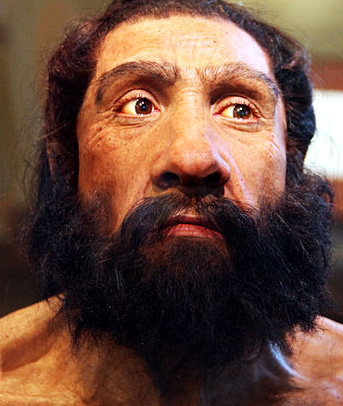DNA Ties to Forgotten Neanderthal Ancestors

Model of a Neanderthal at the Smithsonian Museum
A bone from a man who lived in Siberia forty five thousand years ago carries a spark from our hominid cousins: one or two percent of his DNA came from Neanderthals. He ate “C3” plants, which include plants such as garlic, eggplants, pears, lentils and wheat. I wonder if he would have liked my home-made hummus.
Neanderthals were already far in his past. I suppose he would have reacted with fear and aggression if he’d met a Neanderthal. I suppose he would have reacted the same way to me. Even so, some modern humans and Neanderthals were intimate. Love? Rape? Something I can’t imagine? I’ll never know. Maybe fiction like the Clan of the Cave Bear is the closest we’ll ever come to understanding.
Neanderthals have gradually become more human in our view. Some of the first Neanderthal bones found were arthritic. That may indicate the person was fed and cared for by relatives, but early interpretations painted Neanderthals as stooped over, animalistic creatures. We’ve learned a lot over the decades. We now know Neanderthals had art, made tools, buried their dead, and conversed.
If I’m a typical modern human whose ancestors passed through Eurasia, I carry that spark too, one or two percent Neanderthal DNA, a small bit of immortality entrusted to the future by my ancient cousins. If we can come to embrace our ancient ancestors as human, perhaps there’s hope for today’s tribes to make peace. Civilization is the trend to view more and more of humanity as “one of us.”
See more about the Siberia find here and here.




